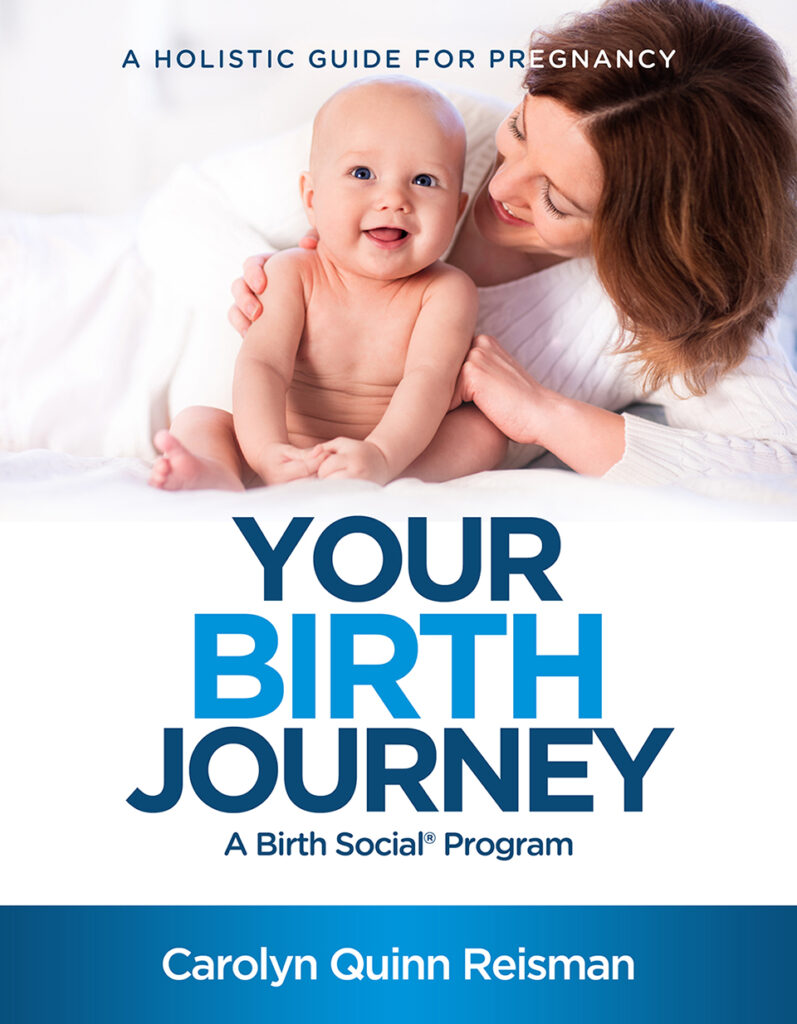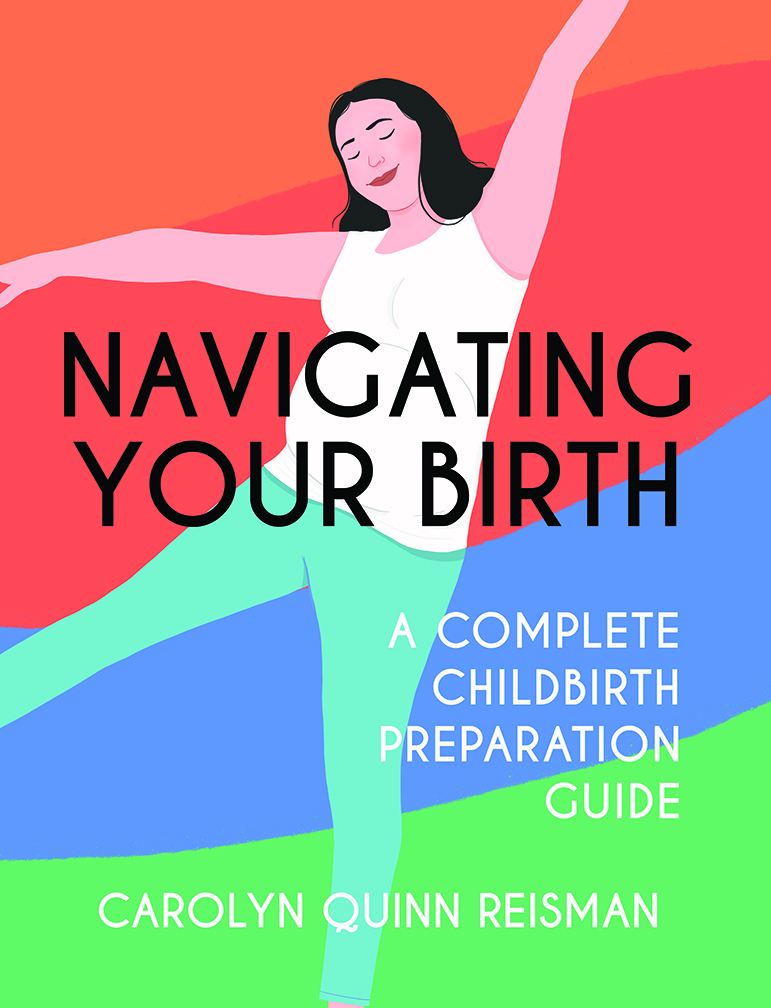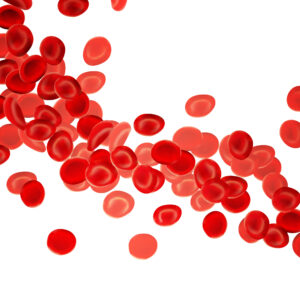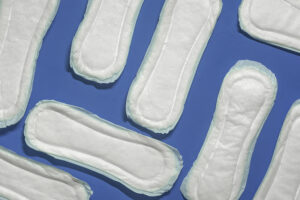After your placenta has delivered, it leaves behind a wound the size of a dinner plate. This is a compelling reason to rest and take it easy during the first few weeks. In fact, it takes between 4-6 weeks for the placenta wound to completely heal. During this time, you are susceptible to increased bleeding, hemorrhage and infection – even if you are feeling good! Take it easy. Even the smallest errands and household duties can make you start bleeding again.
Normal Bleeding
During the first 3-4 days after birth, you will have a moderate to heavy flow of dark red blood. This is called lochia rubra. During the next few days, the lochia rubra gradually changes color to a brownish–red or pinkish color and decreases in amount. This is called lochia serosa. Finally, between 7-10 days postpartum, the lochia becomes pale yellow-white and decreases in amount over the next 2-4 weeks. This is called lochia alba. The period of time the lochia can last varies, although it averages approximately 4 to 6 weeks.
Here’s what you can expect:
- Day 1: Fresh red to brownish-red blood. Heavy flow that probably saturates one maternity pad every few hours, with one to two large clots or several smaller ones.
- Day 2 to 6: Darker brown or pinkish red blood. Light to moderate flow with 3 to 5 inch stains on your maternity pads and smaller blood clots.
- Day 7 to 10: Darker brown or pinkish red blood, becoming lighter. Variable but lighter flow, with less than a 3 inch stain on your pads.
- Days 11 to 14: Darker brown or pinkish red blood, becoming lighter. Lighter flow, you may have some sanitary towels that are hardly stained.
- Week 3 to 4: Paler, possibly a creamy white blood loss. Lighter flow.
- Week 5 to 6: Scant – brownish, pinkish red, or creamy yellow stains, possibly for several weeks, and possibly only on some days.

IF YOU SATURATE TWO PADS IN ONE HOUR OR SOAK A PAD EACH HOUR FOR TWO OR MORE HOURS
CALL YOUR HEALTHCARE PROVIDER!
Clots
Early on, you may pass some small clots. Clots look like little chunks of liver and can differ in size from the size of a penny to the size of a lemon, which can be a bit of a surprise when it falls onto your pad or into the toilet. This is caused by blood pooling in your uterus when you are lying down, so don’t be alarmed when you stand up and expel a few small clots or a larger one.
✱ If you pass clots the size of a lemon or larger, call your provider.
If You Have Bright Red Bleeding After the First Few Days
If after a few days your bleeding becomes bright red and heavy again, it is often a sign that you have done too much and you should slow down and rest. Stay off your feet for 24 hours. Pamper yourself for a good week before resuming light activity. Bright red bleeding may also indicate retained placental or membranous products, or uterine atony.
✱ Please let your provider know immediately if your bleeding increases.
Lochia Smell
After 2-3 days, lochia becomes colonized by bacteria giving off a typical lochia smell, which is normal. This should not be confused with the bad odor from lochia in postpartum infection, which would be foul.
✱ Call your provider if the lochia has a foul smell (normal lochia should smell like a normal period)
Temperature
Take your temperature a couple of times per day during the first 24-48 hours. DO NOT EAT or DRINK ONE HALF (1/2) HOUR BEFORE TAKING YOUR TEMPERATURE. If you are breast feeding, you may experience a slight elevation of temperature (about 100.0 degrees) when your milk “comes in”. This usually happens the third day after giving birth, and is a normal phenomenon.
✱ If you have a temperature over 100.4 orally, call your provider!
When to Call Your Provider
You should contact your provider if you notice any of the following, which could be signs of an infection or another more serious condition such as postpartum hemorrhage:
✱ Very large clots (the size of a lemon or larger)
✱ A very heavy flow — enough to soak through two maxi pads in one hour or one maxi pad every hour for two or more hours
✱ Lochia that has a foul smell (normal lochia should smell like a normal period)
✱ Faintness, breathlessness, dizziness or a racing heart
✱ Nausea or vomiting
✱ Swelling and pain around the vagina or perineum (the area in between the vagina and rectum)
✱ Fever or chills
American College of Obstetricians and Gynecologists, Postpartum Hemorrhage, October 2017.
Cleveland Clinic, Pregnancy: Physical Changes After Delivery, January 2018.
March of Dimes, Postpartum Hemorrhage, March 2020.
Mayo Clinic, Postpartum Care: What to Expect After a Vaginal Delivery, March 2020.
National Institutes of Health, National Library of Medicine, National Center, Lochia Patterns Among Normal Women: A Systemic Review, J Women’s Health, December 2012.
U.S. Department of Health and Human Services, Office on Women’s Health, Recovering from Birth, June 2018.















